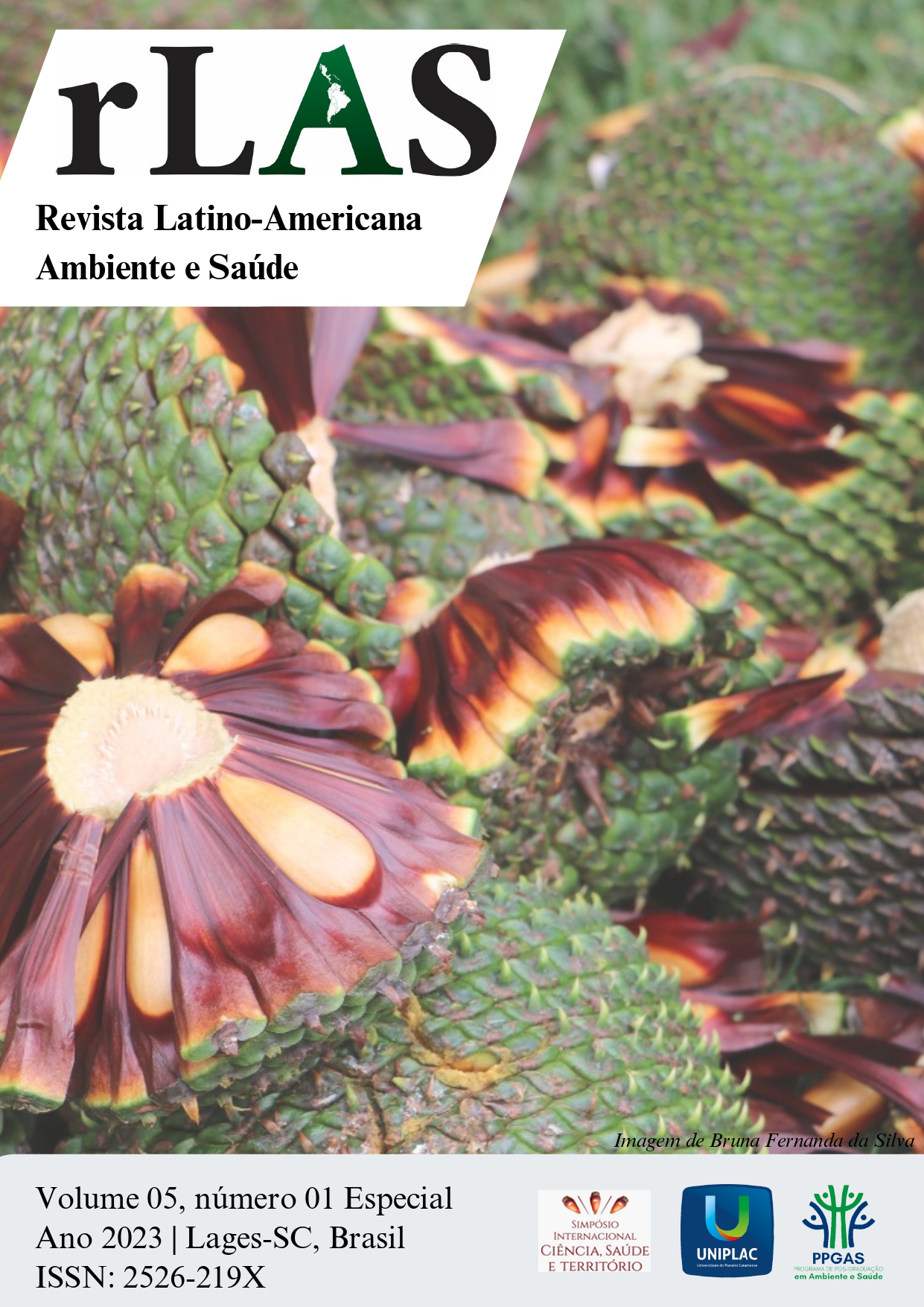Evaluation of the resistance of bacteria and pathogens to antibiotics in urocultures in the analysis laboratory clinics
Keywords:
Urocultures, Resistance, BacteriaAbstract
The presente study identified isolated UTI-causing bactéria in urine uroculture tests and
analyzed antibiotic resistance in a clinical analysis laboratory. Data collection occurred
by consulting the data in the SILABOR system of the Peritiba clinical analysis laboratory.
The data used were which microorganisms were isolated, the antimicrobial susceptibility profile, sex and age of patients with positive samples. The results reveal that the sex most
affected by urinary tract infection is female and the age grou pis elderly patients aged 71
to 80 years. Regarding the profile of resistance to antimicrobials, there was greater
resistance in urine cultures positive for ampicillin (93%) followed by amoxicillin/
clavulanic acid (64%), ciprofloxacin (29%), norfloxacin (21%), levofloxacin and
sulfazotrim (14%), and the remainder of antibiotics such as nalidixic acid, amikacin,
cefazolin, gentamicin and nitrofurantoin (7%). These results are fundamental for the
generation of new strategies in the health of the population of the region studied, helping
in the correct treatment of patients, reducing the number of cases with bacterial resistance
and consequently reducing health costs.
References
ALVES, D. M. S.; EDELWEISS, M. K.; BOTELHO, L. J. Infecções comunitárias do trato urinário: prevalência e susceptibilidade aos antimicrobianos na cidade de Florianópolis. Revista Brasileira de Medicina de Família e Comunidade, v. 11, n. 38, p. 1-12, 2016.
CARNEIRO, M. et al. O uso de antimicrobianos em um hospital de ensino: umabreve avaliação. Revista da Associação Médica Brasileira, v. 57, n. 4, p. 421–424, 2011.
CARRARO-EDUARDO, J. C.; GAVA, I. A. O uso de vacinas naprofilaxia das infecções do trato urinário. Jornal Brasileiro de Nefrologia, v. 34, n. 2, p. 178–183, 2012.
DENNY, K. J. et al. Appropriateness of antibiotic prescribing in the Emergency Department. Journal of Antimicrobial Chemotherapy, v. 74, n. 2, p. 515– 520, 2019.
FLORES-MIRELES, A. L. et al. Urinary tract infections: epidemiology, mechanisms of infection and treatment options. Nature Reviews Microbiology, v. 13, n. 5, p. 269–284, 2015.
FOXMAN, B. Epidemiology of urinary tract infections: incidence, morbidity, and economic costs. Disease-a-Month, v. 49, n. 2, p. 53–70, 2003.
FOXMAN, B. The epidemiology of urinary tract infection. Nature Reviews Urology, v. 7, n. 12, p. 653–660, 2010.
FOXMAN, B. Urinary tract infection syndromes. Occurrence, recurrence, bacteriology, risk factors, and disease burden. Infectious Disease Clinics of NorthAmerica, v. 28, n. 1, p. 1–13, 2014.
GUIDONI, E. B. M.; TOPOROVSKI, J. Infecção urinária na adolescência. Jornal de Pediatria, v. 77, n. 2, p. 165-169, 2001.
HEILBERG PI, S. N. Abordagem diagnóstica e terapêutica na infecção do trato urinário - Itu. Revista da Associação Médica Brasileira, v. 49, p. 109-116, 2003.
JÚNIOR GUERRA, G. E. S. et al. Urinary tract infections: frequency and etiology in outpatients. 2019.
KASHEF, N.; DJAVID, G. E.; SHAHBAZI, S. Antimicrobial susceptibility patterns of community-acquired uropathogens in Tehran, Iran. Journal of Infection in Developing Countries, v. 4, n. 4, p. 202–206, 2010.
KAYE, D. Complicated urinary tract infection in the geriatric population topical collection on infectious diseases in the elderly. Current Geriatrics Reports, v. 4, n. 1, p. 79–86, 2015.
KOCH, C. R. et al. Antimicrobial resistance of uropathogens among outpatients, 2000- 2004. Revista da Sociedade Brasileira de Medicina Tropical,v. 41, n. 3, p. 277–281, 2008.
LICHTENBERGER, P.; HOOTON, T. M. Complicated urinary tract infections. Current Infectious Disease Reports, v. 10, n. 6, p. 499-504, 2008.
LIMA, A. D. P. Perfil de infecções bacterianas do trato urinário e resistênciaaos antibióticos (Trabalho de conclusão de curso). Universidade Federal de Uberlandia, Uberlândia, Brasil. 2017. Disponível em: https://repositorio.ufu.br/handle/123456789/20721
LOPES, H. V.; TAVARES, W. Infecções do Trato Urinário: Diagnóstico. Projeto Diretrizes – Sociedade Brasileira de Infectologia e Sociedade Brasileira deUrologia, p. 1–8, 2004.
O'BRIEN, V. P. et al. Drug and vaccine development for the treatment and prevention of urinary tract infections. Urinary Tract Infections: Molecular Pathogenesis and Clinical Management, v.4, n.1, p. 589-646, 2016.
PEZESHKI NAJAFABADI, M. et al. Common microbial causes of significant bacteriuria and their antibiotic resistance pattern in the Isfahan Province of Iran. Journal of Chemotherapy, v. 30, n. 6–8, p. 348–353, 2018.
PRAH, J. K. et al. Evaluation of urinalysis parameters and antimicrobial susceptibility of uropathogens among out-patients at University of Cape Coast Hospital. Ghana Medical Journal, v. 53, n. 1, p. 44–51, 2019.
TORTORA, G.J.; FUNKE, B.R.; CASE, C.L. Microbiologia. 8 ed. Porto Alegre: Artmed, 2006.
WEEKES, L. M. Antibiotic resistance changing management of urinary tract infections in aged care. Medical Journal of Australia, v. 203, n. 9, p. 352,2015.


